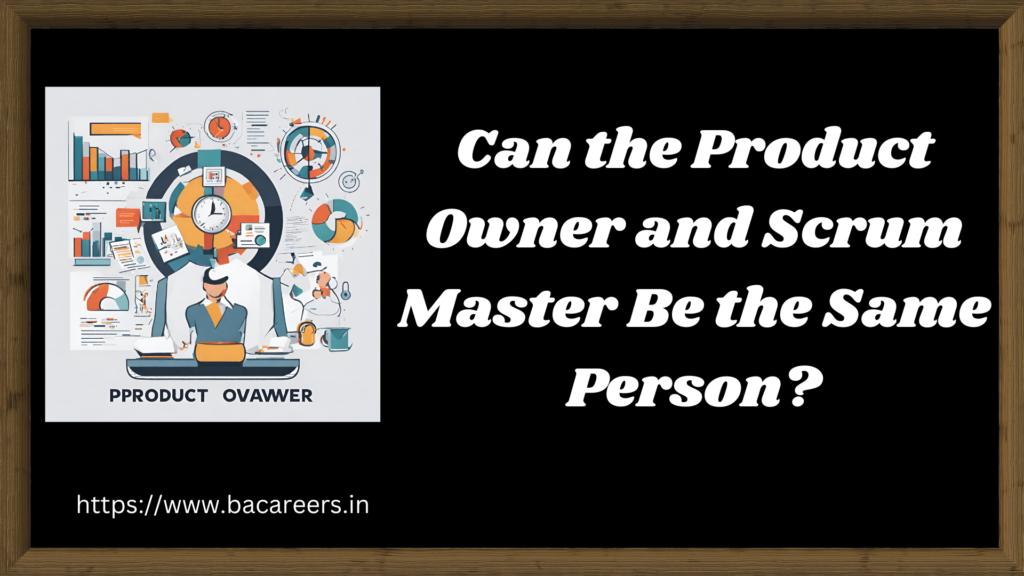In the realm of Agile methodologies, Scrum has emerged as one of the most popular frameworks for iterative product development. Central to the success of Scrum are two key roles: the Product Owner and the Scrum Master. Traditionally, these roles are distinct, each with its own set of responsibilities. However, as Agile practices evolve and teams adapt to various circumstances, the question arises: Can the Product Owner and Scrum Master be the same person? Let’s delve into this intriguing proposition and explore the dynamics of dual roles in Scrum.

product owner and scrum master can be the same person
While it is possible for the Product Owner and Scrum Master roles to be filled by the same person, it is generally not recommended in order to maintain a healthy balance of responsibilities and perspectives within a Scrum team. The Product Owner is responsible for defining and prioritizing the product backlog, ensuring that the team is working on the most valuable tasks to the business. On the other hand, the Scrum Master is focused on facilitating the Scrum process, removing any obstacles that may hinder the team’s progress, and ensuring that the team is adhering to Scrum principles and practices. By having separate individuals in these roles, it helps avoid conflicts of interest and allows each role to be carried out effectively. However, in small teams or in certain situations, it may be feasible for one person to take on both roles as long as they can effectively manage the responsibilities of each role without compromising the success of the team. Ultimately, the key is to prioritize what works best for the team and the project at hand.
Understanding the Roles:
Before delving into the feasibility of combining the roles, it’s crucial to understand the distinct responsibilities of each:
- Product Owner: The Product Owner is responsible for representing the interests of the stakeholders and ensuring that the development team delivers value to the business. They define the product vision, prioritize the backlog, and make decisions about what features to include in each sprint.
- Scrum Master: The Scrum Master serves as a servant-leader to the Scrum team, facilitating the Scrum process and removing impediments that hinder the team’s progress. They are responsible for ensuring that Scrum practices are followed, fostering collaboration, and helping the team become self-organizing.
The Case for Combining Roles:
At first glance, combining the roles of Product Owner and Scrum Master may seem counterintuitive, as each role requires a distinct focus and skill set. However, under certain circumstances, this dual role arrangement can offer several potential benefits:
- Streamlined Communication: Having one person act as both the Product Owner and Scrum Master can streamline communication channels within the team. This individual possesses a deep understanding of both the product vision and the Scrum framework, facilitating clearer communication between the development team and stakeholders.
- Alignment of Priorities: By embodying both roles, the individual can ensure that the priorities of the product align closely with the goals of the Scrum team. This alignment can help minimize conflicts and ensure that the team’s efforts are directed towards delivering maximum value to the business.
- Faster Decision-Making: With a single person holding both roles, decision-making can become more efficient. Instead of waiting for input from separate Product Owner and Scrum Master entities, the team can benefit from quicker decisions, reducing delays and improving overall productivity.
- Flexibility and Adaptability: In some situations, especially within smaller teams or in startups with limited resources, the flexibility of having one person take on both roles can be advantageous. This adaptability allows the individual to wear multiple hats and respond effectively to changing project requirements.
Challenges and Considerations:
While the idea of combining the Product Owner and Scrum Master roles offers potential benefits, it’s essential to acknowledge the challenges and considerations associated with this arrangement:
- Conflicting Priorities: Balancing the responsibilities of both roles can be challenging, as the Product Owner’s focus on delivering value may sometimes conflict with the Scrum Master’s role of facilitating the process and removing impediments.
- Role Overload: The dual role arrangement can lead to role overload for the individual, potentially diluting their effectiveness in both capacities. It requires a high level of skill, time management, and emotional intelligence to navigate the demands of both roles successfully.
- Loss of Checks and Balances: Separation of duties between the Product Owner and Scrum Master serves as a system of checks and balances, ensuring that decisions are well-rounded and not overly influenced by one individual’s perspective. Combining the roles may compromise this balance and increase the risk of bias.
- Team Dynamics: The team’s dynamics and culture play a significant role in the success of a dual role arrangement. Some teams may thrive with one person serving in both capacities, while others may struggle with a lack of diversity in leadership perspectives.
Conclusion:
In conclusion, while combining the roles of Product Owner and Scrum Master is feasible under certain circumstances, it’s not a one-size-fits-all solution. The decision to merge these roles should be carefully considered based on factors such as team size, organizational structure, and project complexity. When executed thoughtfully, this dual role arrangement can foster streamlined communication, alignment of priorities, and faster decision-making. However, it also presents challenges related to conflicting priorities, role overload, and potential loss of checks and balances. Ultimately, the success of such an arrangement hinges on the individual’s ability to effectively navigate the demands of both roles while maintaining a focus on delivering value to the business and fostering a collaborative, high-performing team environment.
The Key Differences Between a Scrum Master & Product Owner

Business Analyst , Functional Consultant, Provide Training on Business Analysis and SDLC Methodologies.

I like the valuable info you provide in your articles. I will bookmark your blog and check again here frequently. I’m quite sure I抣l learn plenty of new stuff right here! Good luck for the next!